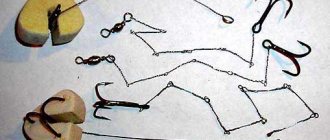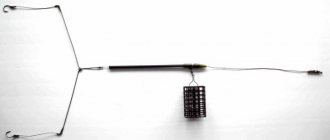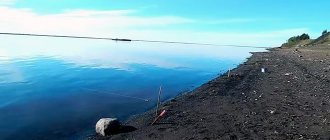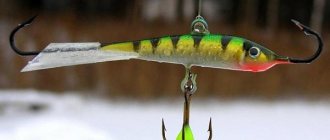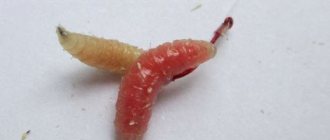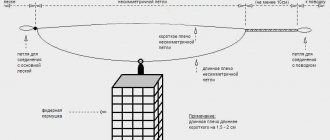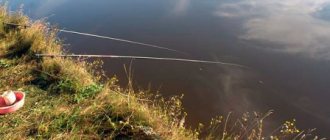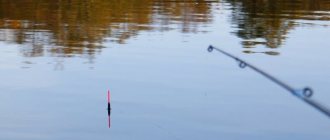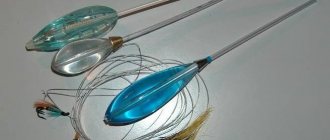Fluorocarbon leader is currently causing a lot of controversy among fishermen. Some of them are convinced that it is useless.
As an argument, they cite the fact that a pike can supposedly bite through such a leash without much effort. Others, in turn, believe that a fluorocarbon leash saves you from the teeth of a predator, and from shells, and from stones. Which one is right?
Description of fluorocarbon leader
Peculiarities

Fluorocarbon, in general, is quite resistant to aggressive aquatic environments and mechanical stress. Of course, steel or titanium leashes are undoubtedly better. But they are also heavier, and can also make it difficult to play with a light bait.
Most fishing fans have a positive opinion about fluorocab, claiming that it is an excellent material that adequately withstands the teeth of a predator. But there is another point of view where the use of such a leash is inappropriate, since there is a risk of losing an expensive bait.
Fluorocarbon fishing line has high performance characteristics.
Among them:
- greater resistance to temperature changes (heat, extreme cold), so this leash can be used in winter,
- Durable material, can withstand the teeth of predatory fish,
- does not absorb water, so performance does not deteriorate,
- UV resistant
- almost invisible in water,
- the fishing line is stretchable,
- sufficiently high rigidity, this has a positive effect on the sensitivity of the gear and recognizes every bite. This is especially true when fishing at long distances.
- resistance to aggressive environments. Can be used in rocky bottom conditions.
- It goes well with a baitcasting reel and sinks into the water quite quickly due to its weight, so it is good to use when fishing for bottom dwellers or when fly fishing.
Advantages
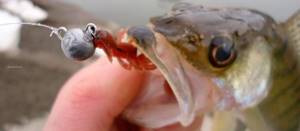
The fluorocarbon leash is invisible and, in addition, quite reliable. The vast majority of fluorocarbon leaders are used by ultralight enthusiasts.
By skillfully selecting thin braid and the right leash, fishermen can achieve good results. As a rule, it is used as reliable leashes in a wide variety of equipment.
Among the advantages of fluorocarbon leashes are the following:
- hardly noticeable to predatory fish,
- there are no deforming changes after the next bite,
- durable material, does not wear out,
- light and quite elastic,
- It’s quite easy to use: the knots are strong, and the leash unravels quickly.
By the way, you can buy fluorocarbon in fishing stores. In addition, making such a leash is quite simple at home.
Fluorocarbon as the main line in ultralight
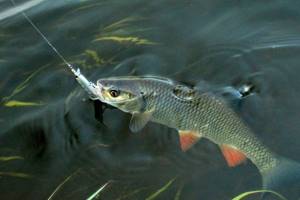
Fluorocarbon line can be used as the main line when fishing at close range (no more than 25 meters) with light and ultralight class baits. The use of fluorocarbon in such conditions is due to the fact that fluorocarbon fishing line has greater stretch than braided line, absorbs fish jerks well and allows for more accurate fishing. When fishing with ultralight class baits, fluorocarbon with a diameter of 0.14 - 0.16 mm is usually used.
You may be interested in: PowerPro Braided Cord
It is not advisable to use fluorocarbon for fishing at a distance of more than 25-30 meters, since sensitivity is reduced too much and the angler will not be able to distinguish a fish bite from the bait touching the bottom or some other obstacle. In such conditions it is better to use braid.
Reviews from fishermen

I read rave reviews on the Internet about the miraculous properties of fluorocarbon. I also decided not to lag behind and purchased 50 meters of this miracle fishing line. I put on leashes and went fishing. The first disappointment came immediately. I saw my fluorocarbon leader in the water, no worse than a regular fishing line! I threw it away, all on my nerves, for four hours, nothing bit. And something began to tell me that the pike didn’t care what kind of leash. If there is a bite, it will be on any leash, but if there is none, then no, and the material of the leash will not help.
Grade:
Oleg
It seems to me that it is very possible to be left without a favorite or expensive wobbler using a fluorocarbon leash. Share, who has experience? Grade:
Sergey
I use these types of leashes very often to catch roach. Winter option from Seaguar. Their water is really almost invisible. There are usually about a third more bites than with conventional leashes. But this is when the roach is very careful. But I didn’t like the purchased leashes for pike. Lots of breaks. In general, at the moment I can’t find anything better for myself than homemade ones made from stainless wire. Grade:
Stas
I use about 0.51mm (from Berkley trilene). Goes great. As a rule, the number of fish is smaller, but the size is much larger. As soon as I see the marks that have formed on the leash, I immediately change it. So far, not a single toothy one has cut. Grade:
Andrey
I definitely use flur only when fishing for pike perch (I gave it up when fishing for pike). I do it myself. For a ridiculous amount of money in the spring I prepare leashes of any length for the entire season. There is no trust in store-bought leashes. Grade:
Semyon
Fluorocarbon leash for pike
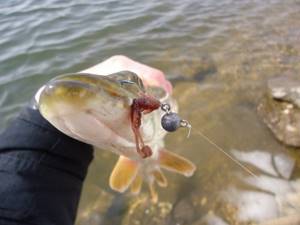
When catching a toothy beast, you can use a fluorocarbon leader instead of a metal leader or twist. This pike leash is made from large diameter fluorocarbon fishing line. At the same time, another quality of fluorocarbon comes to the fore - high abrasion resistance. Pike are not able to bite through strong fluorocarbon fishing line.
Using fluorocarbon line when fishing for trout with micro-oscillators
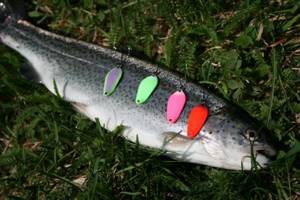
Experienced fishermen, when going long-distance fishing in the light and ultralight classes, use braided line. Of course, Fluorocarbon fishing line also has positive reviews for this type of fishing. For example, if the water is still and you are fishing with micro bait, this material will sink along with the bait, although the braid will float on the surface. This means that this line can be used to immerse the bait to greater depths.
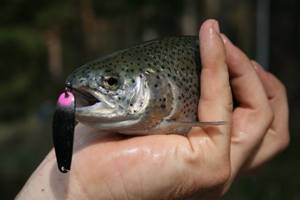
When fishing for trout with micro-spinners on paid reservoirs, it is better to use fluorocarbon. It is known that trout are caught on light spoons, the mass of which is 0.6-1.8 g, and it is important to ensure uniform movement at a minimum speed; the movement of the bait should be ensured in a certain plane, preferably in the area of the bottom of the reservoir. Due to the fact that fluorocarbon has a high specific gravity and is therefore a sinking material, it ensures the desired movement of the bait near the bottom. For fishing in such conditions, fluorocarbon fishing line with a diameter of 0.13 - 0.14 mm is used. Using fluorocarbon line allows you to deepen the bait and move it slowly and smoothly in front of the fish.
You may be interested in: Composite wobbler from Pontoon21: Bully Boo
Bait for trout fishing
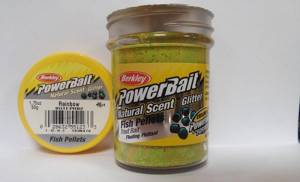
Trout is omnivorous and its diet includes both animal and plant foods. Consequently, baits for trout fishing with a float rod can be of different options. Among animal baits, fishing is promising for fry of the verkhovka, dung worm, maggot and bunch of bloodworms. Insects such as grasshoppers, flies and caterpillars will not be deprived of the attention of a predator if they are presented during the season of their departure or mass exit to the vicinity of the reservoir. Among inert animal baits, shrimp, crab and crayfish meat are popular.
Anglers consider cheese, canned sweet corn, black bread and boiled pearl barley to be the most successful vegetable baits. Particular attention should be paid to this type of artificial bait such as trout paste. They are produced using a special technology with attractants that actively attract predators to the fishing area by smell. Dumplings are rolled out of plastic paste or worms are molded and the bait is placed on a hook. The pastes are distinguished not only by diverse aromas, but also by aggressive exotic colors, among which intense pink shades are considered working colors in most trout reservoirs.
Pike fishing
A retractable leash is especially good for catching pike in areas of a reservoir where there is a lot of different rubbish, snags or large stones at the bottom. The bait delivered right to the nose of the predator provokes even sluggish fish to bite.
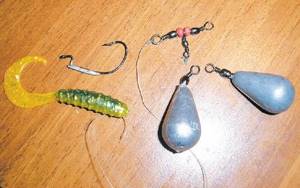
Often the bite occurs already on the first revolutions of the reel. In places with a clean bottom near the edges or holes, a retractable leash is also excellent at catching pike.
Of course, when catching pike on a retractable leash, you can use wobblers or various silicone baits, but the most effective bait will be a dead fish.
With this method, the sinker, moving along the bottom, creates attractive clouds of turbidity, and the fish with the hook is located at the very bottom, thereby reducing the likelihood of snags.
To secure the fish to the leash, use two tees of the sixth number. The first tee, with which the slave is fixed by both lips, is attached tightly, and the second so that it can move to adjust to the size of the bait.
Wiring is selected depending on the time of year and, accordingly, the activity of the predator. In the cold season, it is better to use a leisurely, smooth game with bait at the very bottom.
When the water temperature rises, wiring is done in the water column, making sharper jerks and pulls with a spinning rod.
In the summer months, during the hottest time of the year, fishing close to the surface of the water in the morning hours, at dawn, can bring good luck.
Perch fishing
The most common and popular fishing object in our area is perch.
Let us now analyze each element of the gear in detail:
- Leashes are best used from fluorocarbon with a diameter of 0.12-0.16 mm if you plan to catch specimens up to 1 kg, for larger perch - 0.22 mm.
- The main line must be braided . With the cord, sensitivity increases and the hooking will be biting and sharp, just as needed for a small perch.
- The spinning rod for the diverting leash should start from 2.3 to 2.7 meters long, test up to 14 grams. The system must be fast or extra-fast (ExtraFast). With such a length and action, the casting turns out to be far, and the retrieve is softer.
- The reel should make ideal winding of thin cords, a soft and precisely adjustable friction brake. For bass, a reel with a high gear ratio is suitable when speed rather than power is more important.
- It is best to choose edible silicone as bait. The taste and smell of such rubber makes the perch swallow it more greedily, unlike regular rubber. You can safely experiment with the shape, although you can also stick to the “classics” - twisters and vibrating tails. The size ranges from 2.5 to 8 cm.
- The hook is selected according to the rubber used and fishing conditions. It’s better not to save money and buy good sharp hooks from popular companies.
- The options for the types of sinkers used are discussed above. For perch, the weight of the load rarely exceeds 8-10 grams for still water or slow currents. When fishing in strong currents, the weight of the sinker is selected experimentally.
Wiring when using a retractable leash for catching perch:
- Uniform - after the sinker falls to the bottom, the fishing line begins to unwind evenly, you can periodically accelerate and slow down.
- Stepped - several turns are done - from 1 to 4 turns with the coil, stopping before it falls to the bottom, sometimes it’s worth pausing for 1-3 seconds. The load is selected so that the fall time is 2-4 seconds.
- Wiring is carried out with sharp short (5-15 cm) strokes with the tip of the rod.
